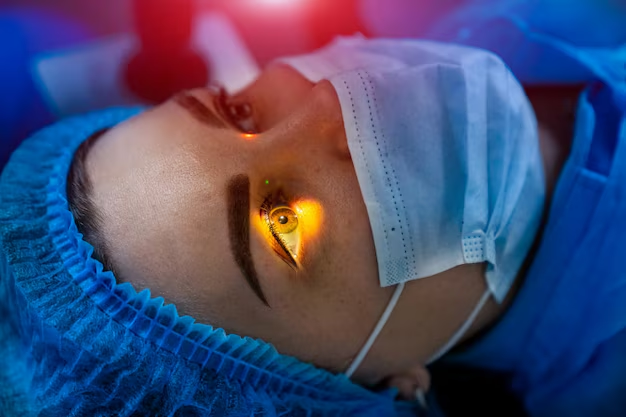
LASIK (Laser-Assisted in Situ Keratomileusis) is a popular refractive surgery procedure performed to correct common vision problems such as nearsightedness (myopia), farsightedness (hyperopia), and astigmatism. Here's an overview of LASIK:
- Preoperative Evaluation: Before undergoing LASIK, you'll have a comprehensive eye examination to determine your candidacy for the procedure. This evaluation includes assessing your eye health, measuring your refractive error, corneal thickness, pupil size, and other factors.
- Corneal Reshaping: During LASIK surgery, a specialized laser is used to reshape the cornea, the clear front surface of the eye. The surgeon creates a thin flap in the cornea using a microkeratome or a femtosecond laser. This flap is lifted, and the excimer laser is applied to the underlying corneal tissue to remove precise amounts of tissue, reshaping it to correct your vision. The flap is then repositioned, where it adheres back into place without the need for stitches.
- Customized Treatment: Advanced LASIK techniques may include wavefront-guided or wavefront-optimized LASIK, which use detailed measurements of your eye's unique optical characteristics to customize the treatment, potentially improving visual outcomes and reducing side effects such as glare and halos.
- Recovery: After LASIK surgery, most patients experience improved vision almost immediately, with continued improvement over the following days or weeks. You may experience some discomfort, dryness, or temporary visual disturbances in the days following surgery, but these usually resolve as the eyes heal. Your surgeon will provide instructions for postoperative care, including the use of prescription eye drops to promote healing and reduce the risk of infection.
- Follow-up Visits: You'll need to attend follow-up appointments with your eye doctor to monitor your healing progress and ensure that your vision is stabilizing. Your doctor will assess your visual acuity and check for any complications or issues that may arise.
- Potential Risks and Complications: While LASIK is considered safe and effective for the majority of patients, like any surgical procedure, it carries some risks. Potential complications may include dry eyes, glare, halos, undercorrection or overcorrection of vision, flap complications, infection, and changes in vision. It's essential to discuss these risks with your surgeon and make an informed decision about whether LASIK is right for you.
- Long-term Results: LASIK can provide long-term correction of refractive errors for many patients, reducing or eliminating the need for glasses or contact lenses. However, it's essential to understand that changes in vision can occur over time, particularly as you age, and you may still need reading glasses or additional vision correction in the future.
LASIK has transformed the lives of millions of people worldwide by offering a safe and effective solution for vision correction. However, it's essential to undergo thorough evaluation and have realistic expectations about the procedure's outcomes and potential risks.
Copyright @ NARAIN EYE CARE